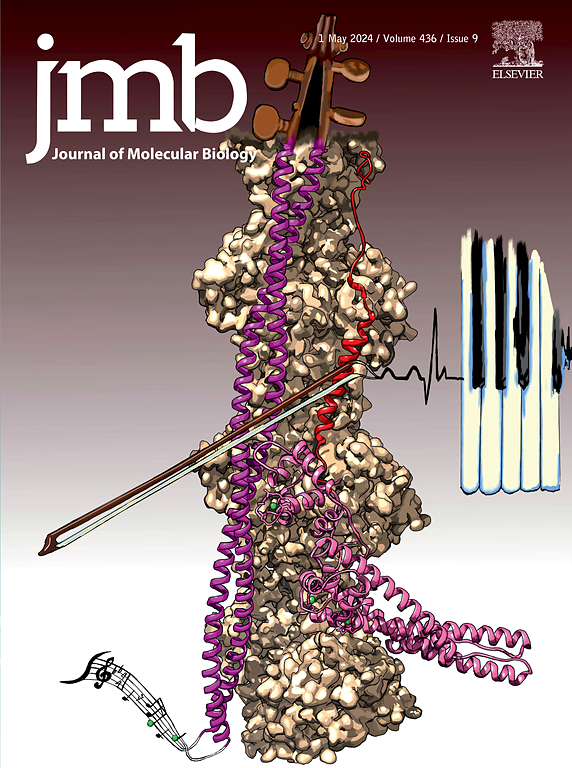Protein Data Bank Japan: Computational Resources for Analysis of Protein Structures
IF 4.7
2区 生物学
Q1 BIOCHEMISTRY & MOLECULAR BIOLOGY
引用次数: 0
Abstract
Protein Data Bank Japan (PDBj, https://pdbj.org/) is the Asian hub of three-dimensional macromolecular structure data, and a founding member of the worldwide Protein Data Bank. We have accepted, processed, and distributed experimentally determined biological macromolecular structures for over two decades. Although we collaborate with RCSB PDB and BMRB in the United States, PDBe and EMDB in Europe and recently PDBc in China for our data-in activities, we have developed our own unique services and tools for searching, exploring, visualizing, and analyzing protein structures. We have also developed novel archives for computational data and raw crystal diffraction images. Recently, we introduced the Sequence Navigator Pro service to explore proteins using experimental and computational approaches, which enables experimental structural biologists to increase their insight to help them to design their experimental studies more efficiently. In addition, we also introduced a new UniProt-integrated portal to provide users with a quick overview of their target protein and it shows a recommended structure and integrates data from various internal and external resources. With these new additions, we have enhanced our service portfolio to benefit both experimental as computational structural biologists in their search to interpret protein structures, their dynamics and function.

日本蛋白质数据库:蛋白质结构分析的计算资源。
蛋白质数据库日本(PDBj, https://pdbj.org/)是三维大分子结构数据的亚洲中心,也是全球蛋白质数据库的创始成员之一。二十多年来,我们接受、处理和分发实验确定的生物大分子结构。虽然我们与美国的RCSB PDB和BMRB,欧洲的PDBe和EMDB以及最近在中国的pddb合作进行数据收集活动,但我们已经开发了自己独特的服务和工具,用于搜索,探索,可视化和分析蛋白质结构。我们还为计算数据和原始晶体衍射图像开发了新的档案。最近,我们推出了Sequence Navigator Pro服务,使用实验和计算方法来探索蛋白质,这使实验结构生物学家能够增加他们的洞察力,帮助他们更有效地设计实验研究。此外,我们还引入了一个新的uniprot集成门户,为用户提供他们的目标蛋白质的快速概述,它显示了一个推荐的结构,并整合了来自各种内部和外部资源的数据。有了这些新功能,我们已经增强了我们的服务组合,使实验和计算结构生物学家都能在他们的搜索中解释蛋白质结构,它们的动力学和功能。
本文章由计算机程序翻译,如有差异,请以英文原文为准。
求助全文
约1分钟内获得全文
求助全文
来源期刊

Journal of Molecular Biology
生物-生化与分子生物学
CiteScore
11.30
自引率
1.80%
发文量
412
审稿时长
28 days
期刊介绍:
Journal of Molecular Biology (JMB) provides high quality, comprehensive and broad coverage in all areas of molecular biology. The journal publishes original scientific research papers that provide mechanistic and functional insights and report a significant advance to the field. The journal encourages the submission of multidisciplinary studies that use complementary experimental and computational approaches to address challenging biological questions.
Research areas include but are not limited to: Biomolecular interactions, signaling networks, systems biology; Cell cycle, cell growth, cell differentiation; Cell death, autophagy; Cell signaling and regulation; Chemical biology; Computational biology, in combination with experimental studies; DNA replication, repair, and recombination; Development, regenerative biology, mechanistic and functional studies of stem cells; Epigenetics, chromatin structure and function; Gene expression; Membrane processes, cell surface proteins and cell-cell interactions; Methodological advances, both experimental and theoretical, including databases; Microbiology, virology, and interactions with the host or environment; Microbiota mechanistic and functional studies; Nuclear organization; Post-translational modifications, proteomics; Processing and function of biologically important macromolecules and complexes; Molecular basis of disease; RNA processing, structure and functions of non-coding RNAs, transcription; Sorting, spatiotemporal organization, trafficking; Structural biology; Synthetic biology; Translation, protein folding, chaperones, protein degradation and quality control.
 求助内容:
求助内容: 应助结果提醒方式:
应助结果提醒方式:


